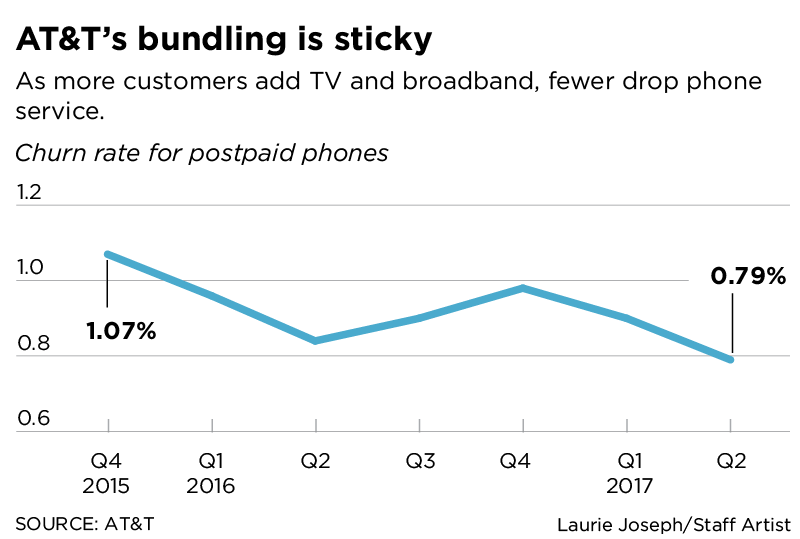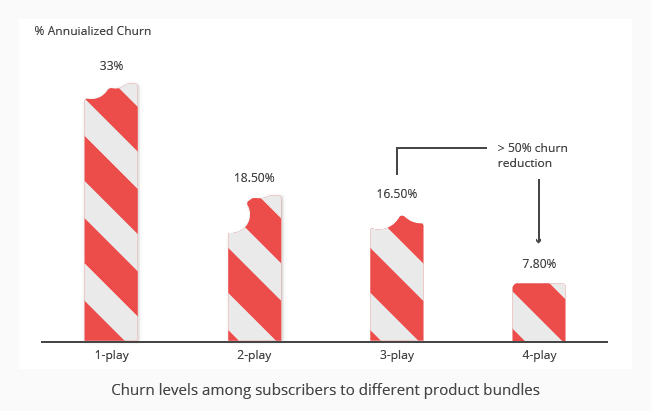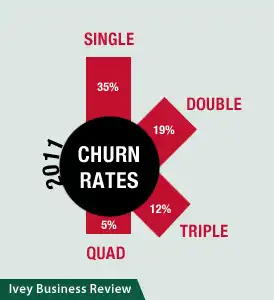The odds that the new proposal to merge Sprint and T-Mobile US could clear antitrust review do not seem to be different from three years ago, when the same deal was proposed, and was opposed by the U.S. Department of Justice.
In fact, DoJ opposition to the vertical merger of AT&T and Time Warner assets, would suggest the conditions are worse. Win or lose their antitrust lawsuit, has DoJ signaled it is more open to big horizontal mergers of the specific type it opposed just three years ago, and when it has opposed a vertical merger many believe should not have caused concern?
Some argue this is not an instance of “consolidation.” That is simply untrue. We would move from four facilities-based tier-one suppliers to just three, at least until some time in the future, when one of the three experiences a major business reversal and some tier-one supplier in the internet ecosystem decides it needs such assets.
“This isn’t a case of going from four to three wireless companies,” says T-Mobile US CEO John Legere. He notes the existence of other mobile virtual network operators and a few regional providers. But the merger most certainly reduces the number of facilities-based tier one providers from four to three.
Some might say the proposed deal occurs “under different conditions” than three years ago, when the U.S. Department of Justice signaled its opposition. True, Comcast is an operating MVNO now. Charter is set to enter the market as well, as an MVNO. But market share has not budged much.
Also open to question are the consumer benefits. Virtually all equity analysts have been in favor of consolidation from four to three mobile companies because that would reduce competition and allow all the firms to raise prices.
T-Mobile and Sprint also argue the deal will not lead to layoffs. What merger of this size has not been accompanied by “merger synergies” that reduce headcount?
“This combination will also force AT&T, Charter, Comcast, Verizon, and others to make investments of their own to compete,” T-Mobile US and Sprint say. Those firms already are investing as fast as their capital budgets will allow.
It is not surprising that Sprint and T-Mobile US argue their proposed merger will lead to faster 5G investment, U.S. 5G leadership, lower prices, create jobs, higher economic growth and more competition in the mobile business. What, after all, would they say?
“This combination will create a fierce competitor with the network scale to deliver more for consumers and businesses in the form of lower prices, more innovation, and a second-to-none network experience – and do it all so much faster than either company could on its own,” said John Legere.
No offense; Legere is a brilliant competitor. But many of the claims are questionable, some would argue. “Faster investment?” It is hard to argue that the four facilities-based mobile service providers are not investing in 5G platforms as fast as their capital budgets will allow.
To be sure, a merged Sprint and T-Mobile US could invest more rationally, but likely not faster: they are running as fast as they can, right now. And by “rational,” less. That is why the argument in favor of the merger includes the claim that “neither company standing alone can create a nationwide 5G network.”
For that claim to make sense, one would have to believe T-Mobile could not have done so on its own. I doubt anybody believes that, given T-Mobile’s own recent claims about how fast it is moving, and how much spectrum it has to do so.
Sprint is challenged financially, to be certain. But it never has been clear Sprint would survive as a stand-alone company in any case. Most observers would likely agree “somebody” eventually will buy Sprint.
But is T-Mobile the “best” buyer, if industry lines are blurring, as Legere argues? Would not a tier-one app provider, a major device supplier, a big cable TV company better match the profile of an industry that now fuses content, apps and access? In that sense, the proposed Sprint merger with T-Mobile creates a bigger horizontal mobile company, to be sure.
But the strategic need still remains: ownership of apps, content and access assets are the future. This merger creates scale in access, which is helpful, to be sure. But the move does not address the future moves that then would become necessary: merger again with a big firm in the apps, platform or device area.
In fact, the scale of the new company likely reduces the odds many firms could envision such an acquisition. And there is a good argument to be made that if the industry is changing (access, platform, apps and content all fusing), as the two firms claim, this move does not help them do so. It simply creates more scale. That is helpful, but leaves unanswered the question of how to strategically reposition in a market that devalues "access only" or "content only" providers.
“There is no way we were going to build four national 5G networks,” some might argue. Many would argue that is not true. One way or the other, all four facilities-based providers are moving to 5G, as fast as they can.
And there are other ways for either T-Mobile or Sprint to get some assets (backhaul for small cells) they might need, if in fact each requires as much small cell support as do AT&T and Verizon. Those are open questions.
The proposed new company would not--despite the claims--get the country to 5G any faster. AT&T and Verizon are moving as fast as they can, no matter what.
As for the claim that such a merger improves chances of “competing with China in the global 5G race,” other questions have to be raised. Where is the competition? Access? Or is the competition fundamentally in the platform, apps and infrastructure supply areas? If so, having another big supplier of “access” does not help much.
In fact, a combined new firm will obviously spend less on infrastructure than the stand-alone companies would have. That is why they want to merge, in part.
Also, the new firm does not create new platform, app or content capabilities. It is, by definition, a horizontal merger of like access assets.
The two firms argue their merger will lead to more competition in rural markets, beyond the fixed network providers. That could happen, at the margin. But more competition in rural markets, by wireless substitution, is coming, anyway, and not just from mobile suppliers.
The merger might, as Sprint and T-Mobile US argue, lead to creation of a better competitor in the enterprise mobility area. That also is possible, to an extent.
The main points, though, are that the stated rationales might be quite the opposite of the probable impact in some cases, are neutral in many other instances and helpful at the margin, as the companies claim.
But it seems unlikely that much as changed in terms of likely antitrust opposition. Much, observers say, will hinge on AT&T getting antitrust approval to acquire Time Warner. But that is a vertical merger that absolutely does not reduce competitors in the market, quite unlike a horizontal merger that will reduce competition.
And DoJ resistance even to the vertical merger, after declaring opposition, three years ago, to the same proposed Sprint merger with T-Mobile, does not bode well for the same transaction, three years later.




